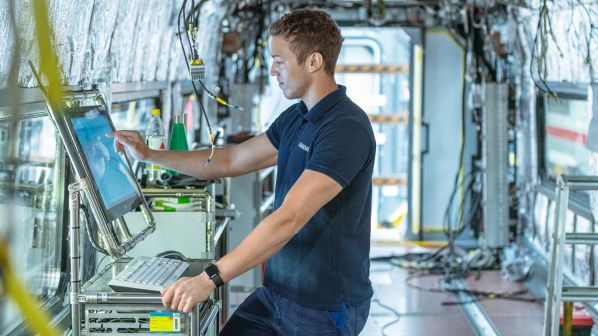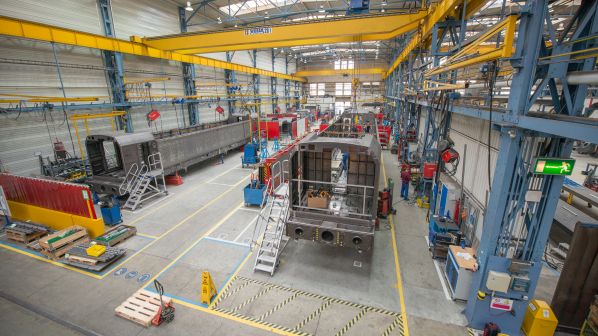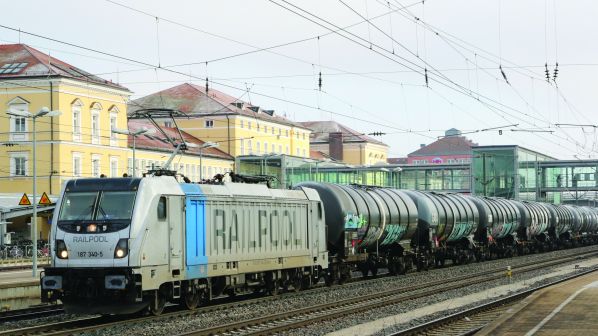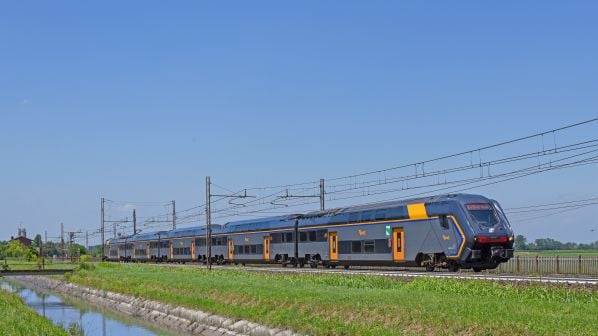CATCHING a train in the 21st century is a different experience than when IRJ first went to press. Speeds and the level of comfort have improved while technical amenities such as Wi-Fi and at-seat chargers have been introduced to improve the passenger experience. The environmental footprint of rolling stock has also continued to fall.
Various pressures have stimulated these changes, but they have largely come about as engineers, manufacturers and operators seek a better offer to passengers at more attractive prices.
The coronavirus pandemic has caused a major reduction in the number of passengers using rail, and changed the way operators are using their rolling stock, including operating longer trains in order to facilitate social distancing. But while passenger numbers may, in the best case scenario, take a year or two to recover to pre-pandemic levels, the overarching pressures such as global warming and urbanisation that were fuelling a revival in rail traffic will remain for decades to come.
One of the biggest developments over the past few decades has been the switch from diesel to electric traction, and with it a shift from dc to ac traction motors as the predominant mode. This resulted in a step change in the power output of locomotives allowing, for example, three units to do the job of five, and also improving control over the power required during operation.
The development of ac traction motors was followed by the introduction of regenerative braking, says Siemens CEO - rolling stock, Mr Albrecht Neumann, which allows energy to be captured and fed back into the overhead catenary. This not only reduces the train’s overall energy usage, but can also limit wear and noise from the brakes, cutting maintenance costs.
The development of power electronics also had a significant impact on cross-border operation in countries with different voltages, says Stadler head of product development, Mr Daniel Forrer.
The approaches of manufacturers in different parts of the world have also changed as the market has evolved. There has been a steady shift in the design and technical development of rolling stock, particularly in Europe, from the railways to the manufacturers, and with that a scaling back of national railway research facilities.
“Most of the people involved are engineers, and they want to create better solutions”
Albrecht Neumann, Siemens CEO - rolling stock
There has been a huge consolidation of the railway equipment manufacturers as well as the expansion of smaller companies. The latest example occurred on January 29 when Alstom completed the purchase of long-time rival Bombardier Transportation as the French supplier pursues a global production strategy; Stadler has gradually transitioned from focusing purely on the small series market to providing larger orders;
Russian manufacturer Transmashholding (TMH) has changed its internal structure to create factories focusing on one particular product, supported by competency centres manufacturing key components; and Progress Rail, United States, has focused on insourcing and vertical integration of some critical components to improve performance, tighten systems integration and shorten lead times, such as acquisition of the Florida-based Haynes Corporation, a fuel injector supplier, in 2015.
Design
The changes in rolling stock development are evident before a new design even moves beyond the idea stage. While factories were previously filled with reams of paper covered with the detailed design of a locomotive or coach, this has since been digitised - first through the introduction of computer-aided design (CAD) and later through the development of 3D solid modelling and immersive visualisation technology, which enables manufacturers to virtually see the components as they are assembled.
“This provides huge benefits in reducing development time and improving first-time engineering accuracy,” says Progress Rail senior-vice president of locomotives, Mr Jim Shirvinksi. “In addition, the use of these technologies reduces learning curve time in the factory and improves manufacturing consistency.”
Digital twins are also increasingly playing a role. Instead of building a prototype which is then tested and further developed, engineers are able to first create a digital twin which can then be put through a simulator. Neumann says an example of this are aerodynamics tests, which would have previously required the creation of a model which would then be put into a wind tunnel.
“Now, we can simulate this electronically,” he says. “We can calculate how much air we have to blow through the electronic circuit in order to keep the temperature under control. And of course that brings down development time and costs.”
However, this doesn’t negate the need to build a final prototype once the system has been fine-tuned. “All this calculation is fine, but we trust the technology when we see it performing and running and working the way it should,” Neumann says.
For Progress Rail, digitisation is allowing the manufacturer to give customers an idea of what they will be purchasing.
“We use virtual tools to select and apply all the various technologies and features for a locomotive order,” Shirvinksi says. “This permits us to stack up and build the locomotive, noting all the features and elements and ensuring all of the design choices fit together. It is a great way to talk through what the customer wants in real-time. We can actually take the customers onboard the product using virtual and augmented reality.”

This is translating to the way engineers use 3D technologies, shared databases and digital analytical tools during the manufacturing process. Manufacturing techniques have also changed, with arc welding giving way to spot and laser welding, reducing the level of pollutants discharged when manufacturing coach body shells. In addition, the introduction of robots to conduct welding, wiring and testing has improved reliability and accuracy.
“There are hundreds of electrical connections in the train which are then tested by automatic programmes,” Neumann says. “This on the one hand brings costs down but also brings the quality up.”
That’s not to say that robots are replacing staff on the factory floors, but are instead allowing manufacturers to build trains to a level of precision that wasn’t possible previously. Innovations such as weight reduction requires sophisticated engineering methods not possible without the support of robots.
“In the past there were employees with many years of experience, almost as artisans,” Shirvinksi says. “Now we have detailed visual routings and guides to ensure consistent and repeatable manufacturing and assembly techniques. This leads to greater speed, accuracy and product reliability.”
Much of the new development in rolling stock has been driven by the high-speed sector, where technologies that may initially be too expensive to implement on conventional trains are worth the extra cost for manufacturers’ flagship platforms.
“Every extra 10 or 20km/h of top speed requires some additional effort to keep it economically reasonable,” Neumann says. “And in this field, I think in the future, we will see further development. Very often we have a new technology that is not cheap, and first it is applied to high-speed trains because in this application it pays off. Trains these days use 30% use less energy than they did, say, 15 years ago. And 30% is a lot, but it needed the technology. But once this has been developed to an industrial standard, you can use it on trains going maybe 160-180km/h as well.”
Manufacturers have also moved away from designing bespoke vehicles for individual customers, instead creating platforms which are customisable to the customer’s specifications and needs. This results in quicker manufacturing, a reduction of both inventory and cost, and improved quality and product performance. The elements within these platforms are also becoming more modularised.

For example, a technique first developed for high-speed trains that has begun to filter through to other platforms is the creation of “hollow tubes” - trains that are built as a shell in a similar way to an aircraft, without any inbuilt cubicles, walls or interior doors. The interior is designed to suit the needs of individual customers, which can tailor the spacing between seats, the space for luggage and areas for passengers with limited mobility to their own requirements.
“If a certain drive unit is used to drive train type A, we always try to use a similar or identical type in train type B, and engineer the surrounding components accordingly,” Neumann says. “And here again doing this with 3D engineering tools allows us way more flexibility than we had when we didn’t have these tools available.”
Shirvinksi says this also allows individual components to be built and tested as modules before assembly of the final product, further reducing the final test time.
Environmental efficiency
Rail is the only mode of transport to reduce its emissions on a yearly basis, with this achievement partially down to efforts to make rolling stock as efficient as possible, alongside increased electrification of the network.
“Improved eco safety is one of the key trends throughout the transport industry,” says Mr Sergei Perov, project expert at TMH Engineering. “Greater energy efficiency is achieved, first of all, by fitting locomotives and multiple units with more advanced traction systems. Because of efficient power regeneration and lower power consumption by the traction systems, the percentage of power saved by new EMUs and metro trains, for example those used in Moscow, is measured not in single-digit but in double-digit numbers.”
While some rolling stock continues to be built with dc traction motors, asynchronous motors have become the traction of choice. The introduction of adaptive traction motor control, variable-frequency drive (VFD) motors for auxiliary systems, axle-suspended bearings, and advanced electronic fuel injection control systems for diesel engines are also increasing efficiency.
Other efforts to limit the environmental impact of rolling stock include measures to reduce noise emissions.
“Not increasing the weight of the vehicles while at the same time placing higher demands on them is particularly challenging.”
Daniel Forrer, Stadler head of product development
“Noise in the end is pollution as well, and being environmentally friendly means reducing the noise level,” Neumann says. “This is an interesting playground for engineers. It’s quite difficult to keep the train as safe and as efficient as it is while bringing down the noise level without making it super expensive. A train is not a Formula One car, which can use the most expensive material in the world and take many, many hours to produce. It always needs to be efficient, and that’s about an engineer coming up with an efficient solution, which fulfils the targets that are prescribed.”
Another major factor when reducing the environmental impact of rolling stock is weight. One approach to reducing weight is the use of different materials for the car body and interior components. For example, Stadler has begun using lightweight aluminium to replace heavier steel components, while Progress Rail has switched from cast to fabricated bogies.
“Not increasing the weight of the vehicles while at the same time placing higher demands on them is particularly challenging, but manufacturing technology can help in this area,” Forrer says.
Perov says reducing the weight of a vehicle is not a simple undertaking when taking into account the tasks required. This is especially true for locomotives, where weight is linked to the maximum tractive force.
“In this case we can say that every new model produces an increasingly greater tractive effort thanks to new drive systems and more advanced control systems,” Perov says.
Passengers also expect more features such as multimedia systems with multiple screens, on-board communication and passenger information systems, chargers, and complex climate control systems with an integrated disinfection function, which also adds to the weight.
“This equipment needs power so the output of the power supply systems and the capacity of the on-board batteries is growing,” Perov says. “The passenger capacity is increasing too. All this requires the engineers to make a lot of effort to keep the rolling stock within the specified weight range and, at the same time, to meet passengers’ growing needs in terms of comfort and safety.”

Significant progress has been made finding alternatives to diesel traction in recent years. Battery and hydrogen solutions, either as standalone traction sources or as a hybrid with electric traction, are steadily entering the market.
The first hydrogen-powered train was introduced into revenue operation in September 2018, when an Alstom Coradia iLint hydrogen fuel cell multiple unit entered service in Bremervörde, Germany. Since then, other countries including France, Britain, Austria, the Netherlands, Canada and Korea have announced plans to introduce hydrogen trains on secondary lines with less demand and lower capacity requirements as alternatives to expensive electrification projects.
Battery operation is also making strides as battery technology and performance has improved. While most battery locomotives are currently hybrids, Progress Rail has introduced an entirely battery-operated electric locomotive, the EMD Joule, which is currently being tested by Vale in Brazil.
“There has been a tremendous response to the introduction of the EMD Joule, and we are exploring demonstrations with other interested customers,” Shirvinksi says. “We have an additional EMD Joule project with Pacific Harbor Line in California, which will be online soon.
“Another technology shift that has received investment is natural gas locomotives. In this regard, two different technologies are available that have been tested in the United States. There is an additional natural gas locomotive demonstration programme we are developing for the near future with an international customer.”
However, electric traction will remain the primary source of energy.
“I personally believe the best means of supplying the train with energy is with overhead catenary because it has a tremendous advantage, you can ask for basically as much energy as you would like to have which in the case of a high-speed train is more than 10MW when accelerating,” Neumann says.
Electrification has another advantage: electricity can be generated through multiple clean energy sources such as hydro-electric, wind or solar energy.
Electric operation is, however, often restricted by first and last mile capabilities. Freight trains in particular are limited when operating in terminals where catenary is not available due to the need to load and unload containers. Auxiliary diesel engines could still play a part here, as they would only need to run long enough to operate the train out of the terminal until it can connect with the overhead electrification.
The way operation is structured also has a role to play in improving environmental efficiency. “The better the trains and infrastructure are inter-connected, the more energy-efficient the operation will be,” Forrer says. “The goal must be to design rail operation so that trains have to accelerate and decelerate less in succession.”
Maintenance
When it comes to making a decision on which fleet to purchase, operators are increasingly looking past the initial capital costs to the full lifecycle costs. This is leading manufacturers to not only reduce the costs of maintenance, but also consider the time a vehicle must sit out of revenue service in the workshop over its lifetime.
Many tenders also require suppliers to offer maintenance services for the trains for a set period of time.
“Customers these days have more confidence in the manufacturers, especially if the manufacturers are ready to hold full responsibility and offer lifecycle contracts with their products,” says Mr David John, chief technical officer at TMH International.
This has been supported by the rise of condition-based maintenance, using data gathered by the train to improve maintenance intervals and reduce unnecessary work.
“A flexible, data-driven maintenance plan requires a highly sophisticated technical operation, and it is important to undertake the right maintenance at the right time,” Forrer says. “This can be achieved by balancing the intervals between preventive maintenance and failure-based corrective maintenance. Vehicles are often available only in fixed slots each week, which requires a collaborative approach between an operator and ourselves, as the service provider.”
While the trains of today may feature vastly different technology from those that ran in 1961, there is still a way to go. Armed with continuous developments in technology, the rolling stock manufacturing industry is constantly striving to keep up with demand and stay one step ahead of the curve.
“Most of our people involved are engineers, and they want to create better solutions,” Neumann says. “But there’s pressure behind us as well, because competition works. Money is very important and performance as well, and wherever we are today, we have to try to be better tomorrow in order to really compete in this field and against our competitors. I think this is good for the industry.”

